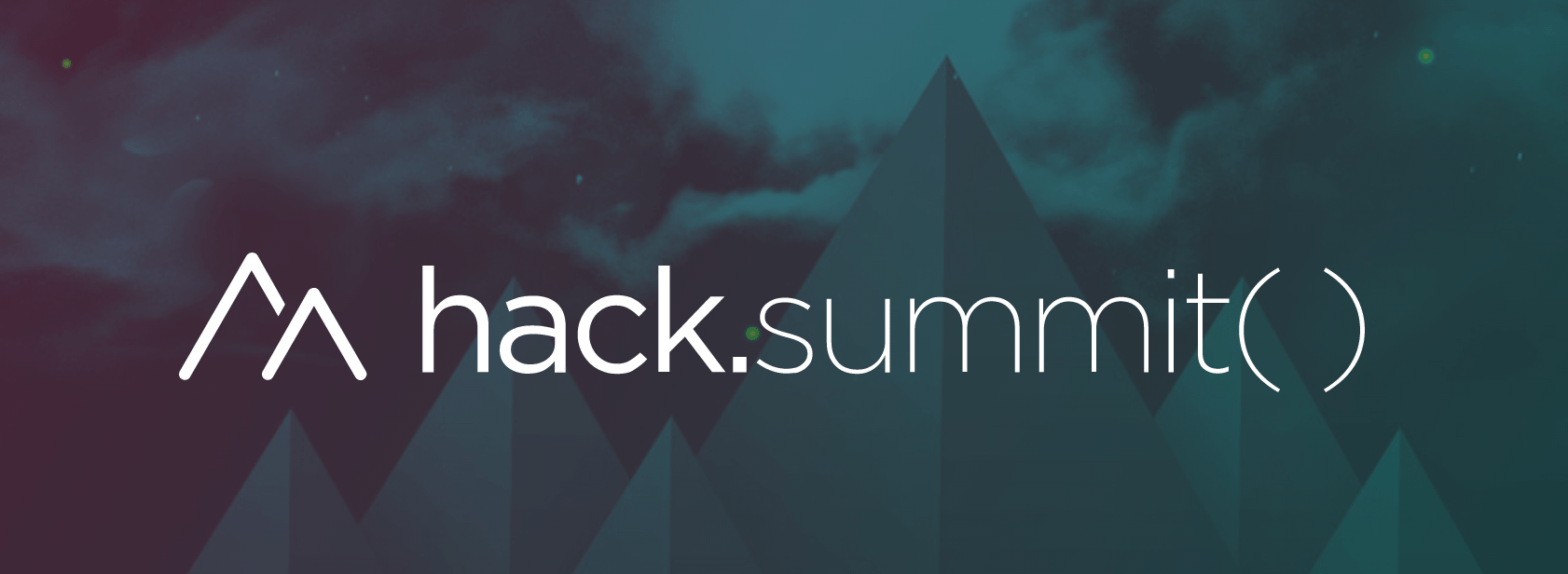
Another excellent hack.summit() has come and gone. This time around, the conference had an overarching theme on blockchain technologies, specifically cryptocurrencies. Since I’m not a block chain developer, I found myself googling terms from time to time as the field is very jargony. Still, I feel like I came away with a better understanding of what all the buzz has been about and look forward to learning more.
Here’s a sampling of the sessions I attended:
Opening remarks, introducing hack.summit() – Ed Roman – Like most keynotes, this was an overview of the conference in general and the blockchain theme. Also a reminder that it’s intended to be technical and the intended audience is developers or other creators. Also, some general information of how to navigate the interface and what to expect during these three days.
What is Byzantine Fault Tolerance? – Leemon Baird – This session starts off with a classic logic problem called the Byzantine Generals Problem. Essentially, how do you coordinate consensus in a distributed system with delays in messaging and suspicion of maliciousness or compromised communication. The presenter walked us through several stages of solving this piece by piece and how complexities have been added over time to resolve man in the middle and other attempts to interfere with trusted communications.
De-centralized Exchange Panel – Alan Curtis and John Piotrowski – This session was an open token exchange discussion on centralized exchanges versus decentralized exchanges. Mostly, there were points raised about the trade-offs between outsourcing some security management tasks such as handling keys to a centralized exchange versus maintaining agility and independence without committing to such a system. I’ve always been interested in the trading field and so much of blockchain is currently focused on monetization before application. While trading isn’t the only application of blockchain, you owe it yourself to understand the current primary driver for innovation in this space.
Engineering an Algorithmic Central Bank – Nader Al-Naji – A session specifically talking about the benefits of Bitcoin decentralization via Basis. Basis purports to offer a system that sources external pricing on itself, referenced to a fiat currency like the dollar. However, it can also key to things like commodities to trend values and control the supply of tokens, much like how the Consumer Price Index works. This results in Basis auto-adjusting much like how the Federal Reserve moderates the money supply to ensure currency instability doesn’t result in over-contraction or inflationary disruptions.
Liquidity, Regulation, and Exchanges – Tammy Camp and Sean Bennett – A compsci and datasci heavy session focusing on the blockchain technology itself. For example, how having a complete dataset of all transaction history built in is hugely advantageous for utilizing transactional systems. Also some caution about how this is still such a new technology that the regulatory landscape isn’t quite clear and that allows the legal market to seek rent in the cryptocurrency space. Some discussion about how by using Stronghold as their anchor/bank/brokerage, depositors grant rights to Stronghold to execute trades on Stellar on their behalf. Currently, in order to access a decentralized exchange, you need a point of access or ‘on-ramp’.
Parity Technologies Presentation – Jutta Steiner – Founder and CEO of Parity – Parity is intended to be a framework or platform for developing blockchain tools and technologies. In this session there was discussion around how in looking at the computing side of blockchain, the various chains and tools and their work product end up comprising a larger computing structure with its own emergent properties. Also, in attempting to make the technology more accessable, Parity is incorporating a vision of improving UX/UI for their toolset.
Building software in a fast-changing ecosystem – Antonio Salazar Cardozo – Technical Lead – Keep Network – I was really looking forward to this session but it got a bit of a late start. Some common sense reminders about how to deal with continuous delivery at a breakneck pace. The session motto was ‘Use Your Pockets’ which refers to the presenters experiences as a young builder and literally means to put your hands in your pockets and think for a second before making a change you can’t unmake. Basically, a nice riff on ‘Measure twice, cut once.’ I’ll need to go back and watch the entire session.
Speaking of, in case you missed a particular session or day of activities, the content is available freely for review. As for me, I’m looking forward to delving more into this space as time permits.
I’d love to hear from any other attendees to share information and opinions about this year’s hack.summit(). If you have any questions or comments, please feel free to add them here or address them to john@benedettitech.com.









